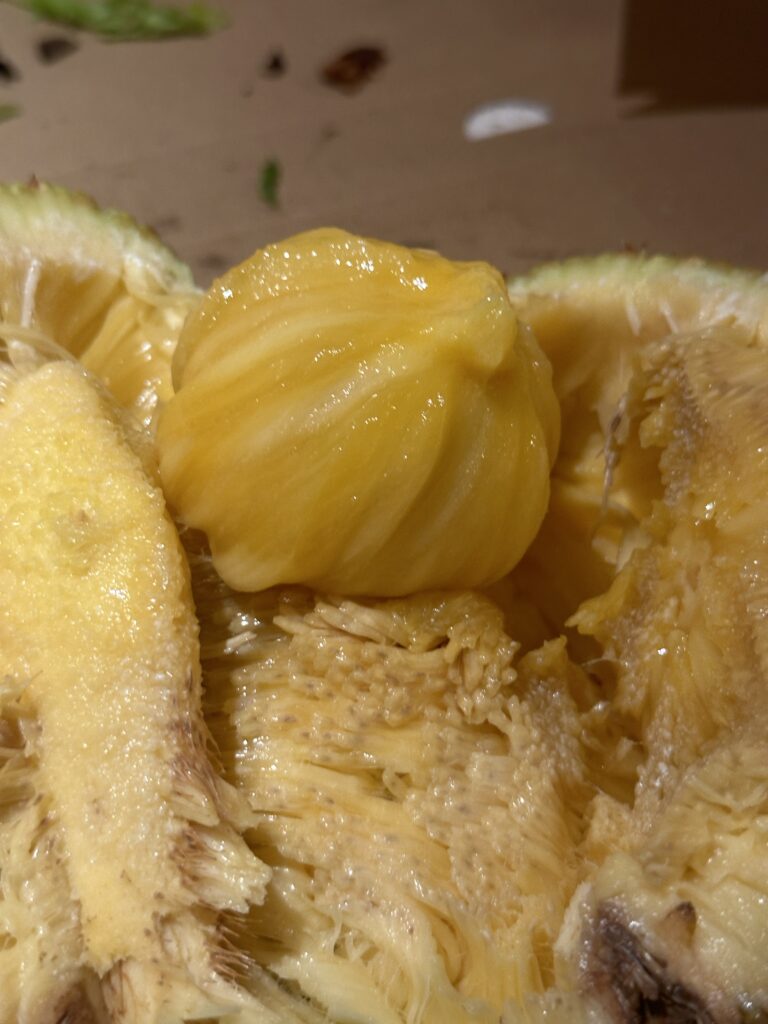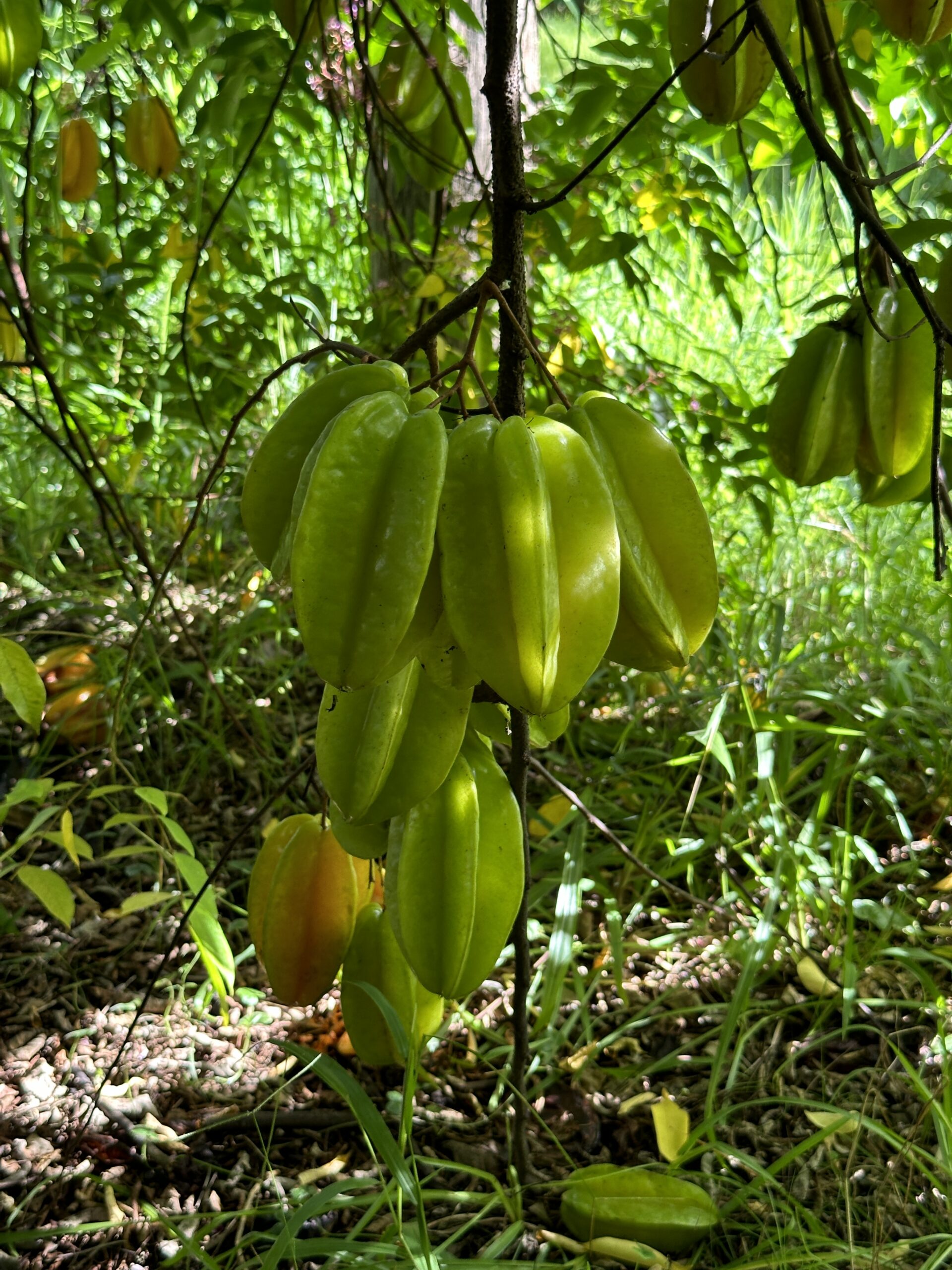Jackfruit has been successfully fruited in the North Island by numerous people. The trees thrive in a frost-free, full sun and excellent free-draining soil. In the absence of all these conditions, plants should instead be grown inside greenhouses or containers and moved to a protected spot over winter. Ideally, seedlings of small fruited and/or early flowering types are best suited to our climate — for their ability to maximise our subtropical weather. Some large fruited selections have been known to have issues bringing fruit to maturity.
Soil requirements: Jackfruit is not particularly fussy when it comes to soil, provided that drainage is adequate. Like many trees, poor-draining and waterlogged soils can be deadly – container growing is recommended in these cases. Otherwise, any rich soil, clay or sandy/loamy soil will suffice. If growing in a container/pot any well-draining potting mix is suitable. Try not to put it into a super large container immediately as they may hold too much water. Gradually pot it up, for example going from its current pot to one that is around 15L.
Sun requirements: Full-sun is much preferred though they can tolerate some degree of shade, fruit production would be reduced. These seedlings have been acclimated to full sun already but their young trunks can get a ‘sun tan’ fairly easily which won’t do any harm to the tree unless very prolonged – try and angle the tree in a position that the top gets full sun but the sides may be protected if this occurs, such as between two plants.
Cold hardiness: They can be hardy down to approximately 0c, however around this range some leaf drop is likely to occur. Younger seedlings will not tolerate frost, but they become more tolerant as the trees mature and therefore could be suitable for planting in the ground after being container grown for a few years in many locations. Container growing can assist as they can be moved inside, into a garage or more sheltered position when extreme cold is to be expected while young seedlings.
Time to fruiting: Jackfruit are fast fruiters from seed compared to most fruit trees. They can set fruit in as little as 3 years (likely 4-5 in NZ). They may fruit faster or slower depending on your location and degree of warmth/container size/planting spot.
Pollination: These trees are self-fertile, but cross-pollination with another tree could increase fruit set but is definitely not required. This is because every single tree contains both male and female flowers (with the females developing into fruit, if pollinated by a male).
Varieties we grow:
Black Gold: Enhanced cold tolerance, dwarf growth habit, firm yellow-fleshed fruit weighing around 6 kilos.
Gold Nugget: Dwarf growth habit, firm yellow-fleshed fruit weighing around 3 kilos.
Nangka Mini: Known for its ability to fruit young, with fruit as little as 1 kilo! Pictured below.
Kyogle Gold: Soft flesh (as opposed to crunchy), sweet bubblegum flavour. Small-medium sized fruit, approx. 8 kilos.
Amber: High quality orange-fleshed selection, makes small-medium sized crunchy fruit. Very highly regarded.
J33: Also known as the honey jackfruit. One of the sweetest types, early flowering, reportedly cold tolerant. Medium-large fruits from around 7-20 kilos, but unlikely to reach that size in New Zealand.
Below: a gold nugget fruit we harvested seeds from, weighing around just 2 kilos.



